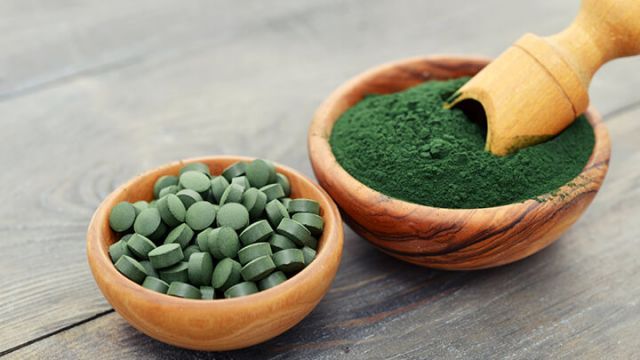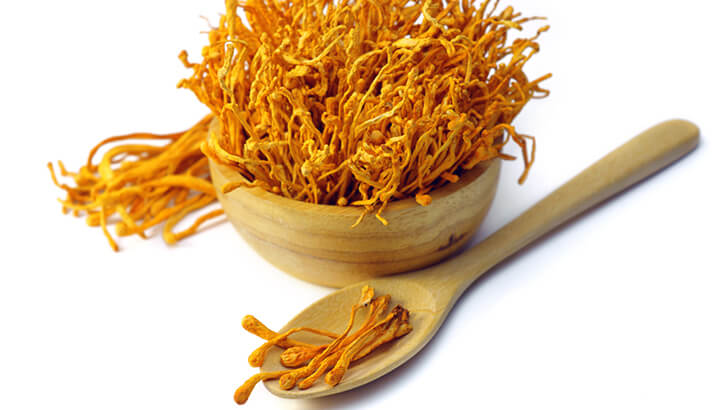
The term “superfood” gets thrown around a lot these days; you see it on all sorts of product labels in nearly every aisle at the grocery store. This term makes people think that a certain food must be healthy. After all, the foods inside are super!
Hype aside, many natural foods really deserve the label “superfood” since they’re teeming with antioxidants, vitamins, minerals and other nutrients. However, there’s a lot of confusion surrounding this categorization. What exactly makes a food a superfood?
While the word superfood is defined quite loosely, it has a lot to do with the ORAC rating of the food in question. ORAC stands for “oxygen radical absorbance capacity,” and it’s a measure of how much antioxidant power a food contains. Foods with a high ORAC rating are generally considered superfoods because of the antioxidant concentration they contain.
Some of these foods are quite cost-efficient, like apples, oranges, spinach and bananas, while others can cost you a pretty penny. The following are thirteen of the priciest superfoods on the market today. Some are worth the extra dollars they demand… others, not so much.
Spirulina
Spirulina is a type of blue-green algae, usually sold in powder or capsule form. You’ll also find it added to a lot of shakes, smoothies and nutrition tonics. The great thing about this funny looking algae is that it’s a complete vegetarian protein. It also contains vitamins A, C, E and K, along with the full range of B-vitamins (even a form of B12, which is very rare in vegetarian foods).
Spirulina also contains a wide range of minerals, calcium, magnesium and zinc, along with heart and brain-healthy omega-3 fatty acids and numerous antioxidant compounds. It is also linked to potent detoxifying effects, as well as to boosting energy, digestion and immunity. It may also help to significantly increase the amount of probiotic bacteria in the gut.
Spirulina is not cheap; you can get a pound for between $30 and $40. This seems like a whole lot, but considering that the normal recommended dose is five to 10 grams, it will likely last you a while. This is one superfood to consider if you have room in your budget.
Acai berries
Acai berries, native to Brazil, have one of the highest ORAC ratings in the fruit kingdom. These tart berries are very high in anthocyanins, antioxidants which have been linked to potent anti-inflammatory benefits, as well as to longevity. They also contain monounsaturated omega-3 fats and are also low in sugar, making them ideal for those with blood sugar issues.
Since they are rarely available fresh outside of Brazil, acai berries are usually sold in purees and freeze-dried powders. While many nutrients are retained if these are packaged properly and don’t contain additives, ORAC scores may be lower than in the fresh berry. Since a four-ounce bag of the freeze-dried powder will run you between $15 and $20, you may want to stick to other berries most of the time and only splurge on acai now and then.
Goji berries
Goji berries also have a high ORAC rating, as they are teeming with antioxidants. They contain vitamins A, C, E, some B-vitamins and an array of minerals, including calcium, magnesium, selenium and zinc. As a bonus, they are also a complete vegan protein. Throughout history, these berries, which are native to China and Tibet, have been used to promote youthful skin, to reduce blood pressure and to bring down fevers.
Since these berries are native to Asian countries, it’s not easy to find them fresh in the Western world. Dried and powdered goji berries can be found at health food stores and some grocery stores, however, they can cost up to $30 a pound. Another superfood to splurge on as a treat, but probably not necessary to stock at all times.
Maqui berries

Like acai and goji berries, maqui berries possess a high ORAC rating. They are very high in anthocyanins and can help combat chronic inflammation throughout the body. These berries, native to parts of South America, may also help to combat high blood sugar by raising insulin levels in the body. Additionally, they are full of vitamin C, iron, potassium and calcium.
However, since these berries are freeze-dried and imported, you’ll pay between $15 and $20 for three or four ounces. If you love exotic berries, treat yourself now and then, but it’ll cost you.
Organic almond butter
It’s well-known that nuts are a great source of fiber, make wonderful healthy snacks and may even help lower LDL (“bad”) cholesterol, thus reducing your risk of heart disease. Almonds, in particular, contain a wealth of other health benefits as well and are a great source of vitamin E, biotin, copper, magnesium, phosphorus and molybdenum.
Along with munching on handfuls of almonds, many people enjoy spreading almond butter on their gluten-free crackers or using it as a dip for fruits and veggies. Organic almond butter is your best choice since you have the assurance that the almonds inside haven’t been grown with pesticides and herbicides. However, a 16-ounce jar can run you close to $20.
If you really love nut butter, go ahead and splurge — just make sure it is made using nutritious oils, not canola or vegetable oils, which are highly processed. Also, watch out for added sugars. However, if the expense is an issue, you can always just eat raw, sprouted almonds. If you wish, grind them in a spice grinder, mix with a bit of coconut oil and sea salt, and use as a spread or dip.
Bee pollen
Bee pollen is a pretty amazing superfood. It is a great source of protein, as it contains a whopping 22 amino acids. It also contains thousands of enzymes, along with a rich profile of vitamins and minerals, including B-complex vitamins (B12 included) and vitamins C, D and E. Bee pollen also contains a wealth of antioxidants, including carotenoids, which help reduce inflammation throughout the body.
These sticky granules have been linked to boosting the immune system, relieving allergy symptoms and aiding in weight loss, to name just a few benefits.
While a pound of bee pollen costs between $15 and $25, it will last you a while if you’re adding a tablespoon to smoothies. This is one superfood that is really worth considering.
Chia seeds
This ancient superfood, cultivated by the Aztecs and Mayans, has a good amount of mucilaginous fiber, as well as protein, vitamin C, omega-3 fatty acids, calcium, iron and magnesium. Chia seeds are also rife with antioxidants and may help to reduce insulin resistance and protect against a number of inflammatory conditions.
Chia seeds can be pricey, significantly more so than other seeds (32 ounces will cost you just over $10 if you’re buying organic), but a little bit goes a long way. This one is also worth the price if you’ve got the room in your budget.
Organic, raw dark chocolate
Yes, chocolate is indeed a superfood, when it’s in a raw, unprocessed form. Cacao has been enjoyed for centuries for its healing properties, which are as effective today as they’ve been for generations. Organic, raw dark chocolate contains a range of B-vitamins, vitamin E, fiber, protein and natural, healthy saturated fat. It is also a great source of antioxidants.
Real chocolate is quite a bit more expensive than the sugary, processed stuff; a pound will cost you approximately $10 or $15. However, for those who love chocolate, it’s far superior to the sugary kind filled with chemicals. If you’ve got a chocolate craving, having a bit of this superfood now and then can do the trick, while benefiting your body.
Kombucha

Kombucha, a fermented tea long prized for its digestive benefits, can do more than just keep you regular. It contains beneficial bacteria cultures that can help to heal your gut, and since your gut is intrinsically linked to your immune system, this can benefit your entire body.
This is another great superfood to have around, but buying it bottled can get very expensive (up to $5 for a small bottle). Plus, the bottled stuff may contain additives and can be highly processed. You’re better off brewing it yourself.
Blue Majik
Blue Majik is a brand of health tonic that has recently hit the market. You can find it in juices, protein shakes and other bottled beverages. The main ingredient in this elixir is spirulina, which was discussed above. While spirulina is great, and Blue Majik does contain a few other ingredients, it may not be all that it’s hyped to be.
Plus, this stuff costs $60 for 30 packets. So, I’d say go for the pure spirulina if you’re looking for a blue-green algae supplement.
Astrologically-farmed eggs
You read that right. The new trend in eggs is to farm them by the phases of the moon. The chickens that lay these eggs are raised according to organic conditions on self-sufficient land. As we know, organic eggs have a wide array of health benefits, but have these eggs gone too far?
If you choose these eggs, you’ll pay about 15 cents more per egg. I’d say sticking to local sources for free-range organic eggs is enough… unless the astrology aspect really appeals to you.
Cordyceps

This one may seem a bit gross, but it’s touted as a superfood nonetheless. Cordyceps is a fungus that is found growing on the larvae of caterpillars. It’s said to have anti-cancer benefits and to boost stamina. Gwyneth Paltrow is one advocate of its use, and this alone has many people clamoring to get their hands on some.
However, under three ounces of this stuff will cost you about $30, and there are plenty of other foods that will give you stamina plus anticarcinogenic benefits. Personally, I would say no to the caterpillar fungus.
Organic processed foods
As I mentioned in the beginning of this article, you’ll find a number of packaged “organic” foods advertising superfoods on the label in the organic section of the grocery store. While these foods may have marginally healthier ingredients than non-organic packaged foods… they’re still processed. Many contain tons of added sugar, processed oils and other unsavory ingredients.
Basically, a processed food is a processed food, even if it says “organic” and/or “superfood” on the label. So, if you’re looking to eat superfoods, better stick to the whole, natural versions.
The verdict
Many of the foods on this list are indeed beneficial — highly beneficial, in fact. If you have the money and want to eat them, that’s wonderful, and they may do a lot for your health as part of an overall healthy diet. However, you don’t need to spend a bunch of money to eat healthy or to enjoy superfoods. There are plenty of fresh, whole superfoods that won’t break the bank.
All in all, if you eat unprocessed, whole foods from the Earth, and include a rainbow of antioxidant-rich fruits and veggies into your diet, you won’t be missing out if you pass on the pricey superfoods.
— Tanya Rakhmilevich

